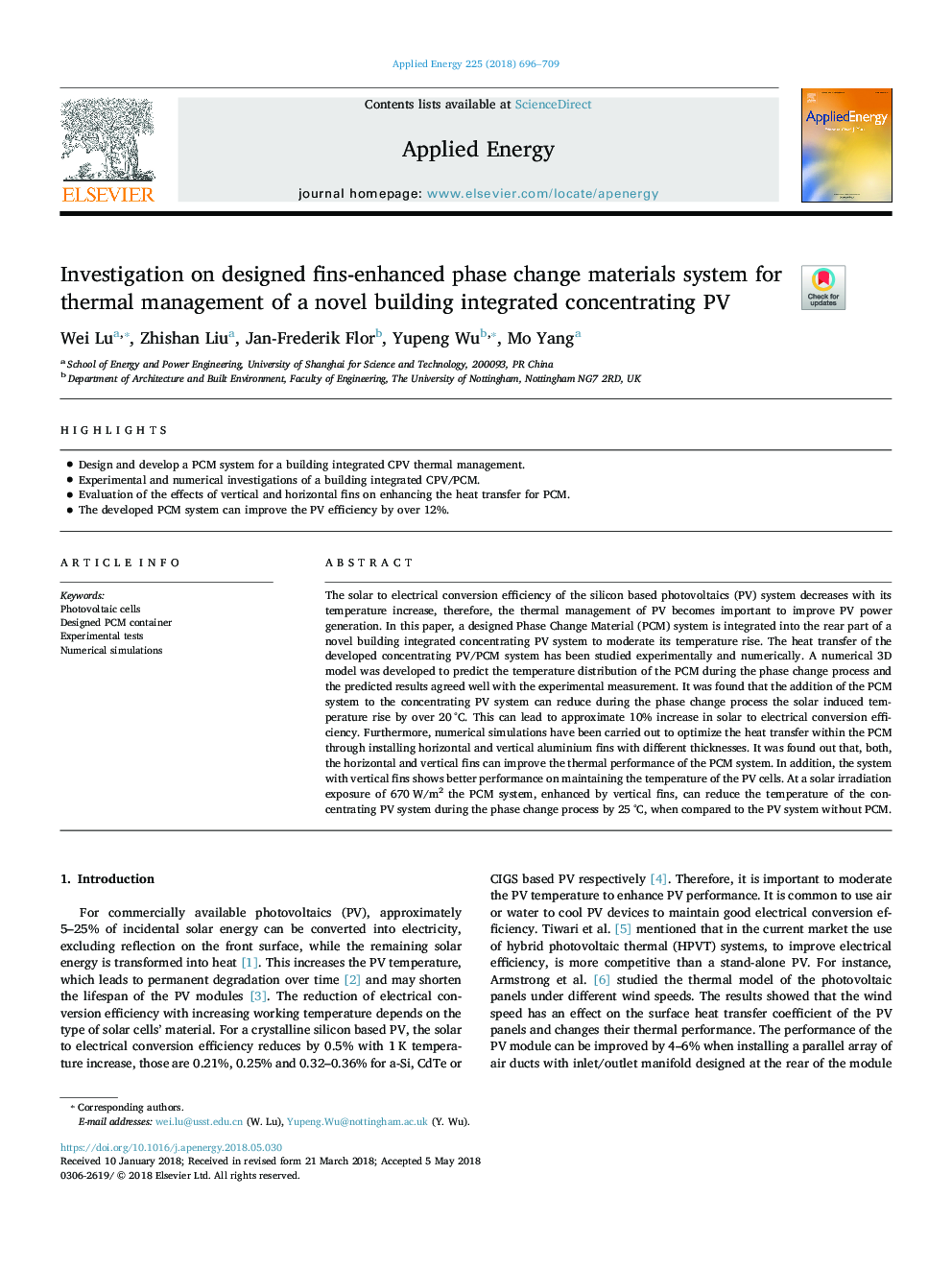| Article ID | Journal | Published Year | Pages | File Type |
|---|---|---|---|---|
| 6679960 | Applied Energy | 2018 | 14 Pages |
Abstract
The solar to electrical conversion efficiency of the silicon based photovoltaics (PV) system decreases with its temperature increase, therefore, the thermal management of PV becomes important to improve PV power generation. In this paper, a designed Phase Change Material (PCM) system is integrated into the rear part of a novel building integrated concentrating PV system to moderate its temperature rise. The heat transfer of the developed concentrating PV/PCM system has been studied experimentally and numerically. A numerical 3D model was developed to predict the temperature distribution of the PCM during the phase change process and the predicted results agreed well with the experimental measurement. It was found that the addition of the PCM system to the concentrating PV system can reduce during the phase change process the solar induced temperature rise by over 20â¯Â°C. This can lead to approximate 10% increase in solar to electrical conversion efficiency. Furthermore, numerical simulations have been carried out to optimize the heat transfer within the PCM through installing horizontal and vertical aluminium fins with different thicknesses. It was found out that, both, the horizontal and vertical fins can improve the thermal performance of the PCM system. In addition, the system with vertical fins shows better performance on maintaining the temperature of the PV cells. At a solar irradiation exposure of 670â¯W/m2 the PCM system, enhanced by vertical fins, can reduce the temperature of the concentrating PV system during the phase change process by 25â¯Â°C, when compared to the PV system without PCM.
Related Topics
Physical Sciences and Engineering
Energy
Energy Engineering and Power Technology
Authors
Wei Lu, Zhishan Liu, Jan-Frederik Flor, Yupeng Wu, Mo Yang,
